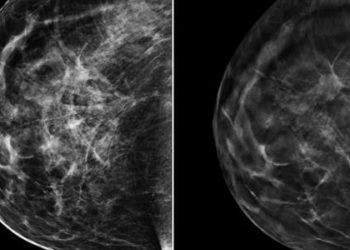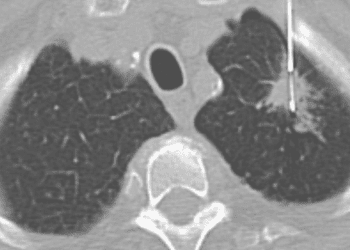Parental input in oncology-related palliation and pain relief for children [Classics Series]
This study summary is an excerpt from the book 2 Minute Medicine’s The Classics in Medicine: Summaries of the Landmark Trials
1. When interviews with parents whose children died from cancer were compared to patient hospital records, researchers found that many children experienced substantial suffering toward the end of life with poorly managed symptoms.
2. There was significant discordance between parent and physician reports of patient discomfort, with parents being significantly more likely to report patient symptoms than physicians.
Original Date of Publication: February 2000
Study Rundown: While researchers previously investigated the quality of end-of-life care among adult oncology patients, no study explored palliative care for children. This study was the first to delve into the state of pediatric end-of-life care through interviews with parents whose children died from cancer and retrospective chart analysis of patient care. Results demonstrated that many children received aggressive care at the end of their lives, with nearly half dying in the hospital and many dying in the intensive care unit. In addition, 89% of children experienced substantial suffering in their last month of life, most of which went unresolved despite treatment attempts.
Through this retrospective analysis, it was found that parents were significantly more likely to report their child’s fatigue, poor appetite, constipation, and diarrhea when compared to physicians. Parents were also significantly more likely to report their child to be in pain if they believed the child’s oncologist to be less involved in direct end-of-life care. These findings suggested that care providers may not be optimally treating these patients due a lack of recognized patient discomfort. Also, results showed that earlier discussions of hospice care were significantly associated with parental descriptions of children as calm in the last month of life.
This study was limited by use of parental report and chart review. However, its findings had many implications for patient care. By encouraging early, direct discussions between physicians and patient families regarding symptoms, discomfort, and goals of care, researchers recognized that patient quality of life might improve as a patient progressed toward the end of life. Today, palliative care is better defined as care of the whole patient, involving an interdisciplinary team that is introduced to patients and their families at the time of a serious diagnosis
Click to read the study in NEJM
In-Depth [retrospective analysis]: A total of 103 parents (91% white, 86% female) of children who had died of cancer during 1990-1997 were interviewed by researchers based out of a large, tertiary children’s hospital. The interview information was then combined with data obtained from chart reviews. In interviews, parents were asked to assess many aspects of his or her child’s end-of-life care including, but not limited to, physical symptoms and suffering during the last month of life, treatment of these symptoms, and the perception of physician involvement at the end of life. Chart review was then completed to collect demographic data along with treatments administered, cancer care course, symptoms in the last month of life, cause and place of death, medical interventions close to the time of death, and discussions regarding end-of-life planning such as hospice and do not resuscitate orders (DNR).
Interviewed parents had children who died of leukemia or lymphoma (n = 50, 49%), brain tumors (n = 23, 22%), or other solid tumors (n = 30, 29%). Eighty-one children died from progressive disease, 21 died from treatment-related complications, with 1 child’s records unavailable for review. On chart review, physicians discussed hospice care with 66% of children with progressive disease. Sixty-six percent of children had DNR orders in their charts. Nearly half, 49%, of patients died in the hospital and, of those, 45% died in the intensive care unit. From parental interview, nearly 100% of patients had at least 1 symptom toward the end of life with fatigue, pain, dyspnea, and poor appetite being the most common. Eighty-nine percent of children had “a great deal” of suffering as a result of 1 or more symptoms. Pain and dyspnea were the most commonly treated symptoms (76% and 65%, respectively), but few patients experienced relief from treatment (27% and 16%, respectively). During the last month of life, 21% of children were described by parents as being afraid. With regard to end-of-life discussions, the length of time between hospice care discussions and death were significantly longer for children whose parents found them to be calm during most of the last month of life (p = 0.01). Based upon parental report, lack of oncologist involvement in end-of-life care was associated with significantly more pain in the last month of a child’s life (OR 2.6, 95%CI 1.0-6.7). In comparing parental interview to chart review, parents reported fatigue (p < 0.001), poor appetite (p < 0.001), constipation (p < 0.001) and diarrhea (p < 0.05) in their children significantly more often than physicians.
Wolfe J, Grier HE, Klar N, Levin SB, Ellenbogen JM, Salem-Schatz S, et al. Symptoms and Suffering at the End of Life in Children with Cancer. New England Journal of Medicine. 2000 Feb 3;342(5):326–33.
©2022 2 Minute Medicine, Inc. All rights reserved. No works may be reproduced without expressed written consent from 2 Minute Medicine, Inc. Inquire about licensing here. No article should be construed as medical advice and is not intended as such by the authors or by 2 Minute Medicine, Inc







